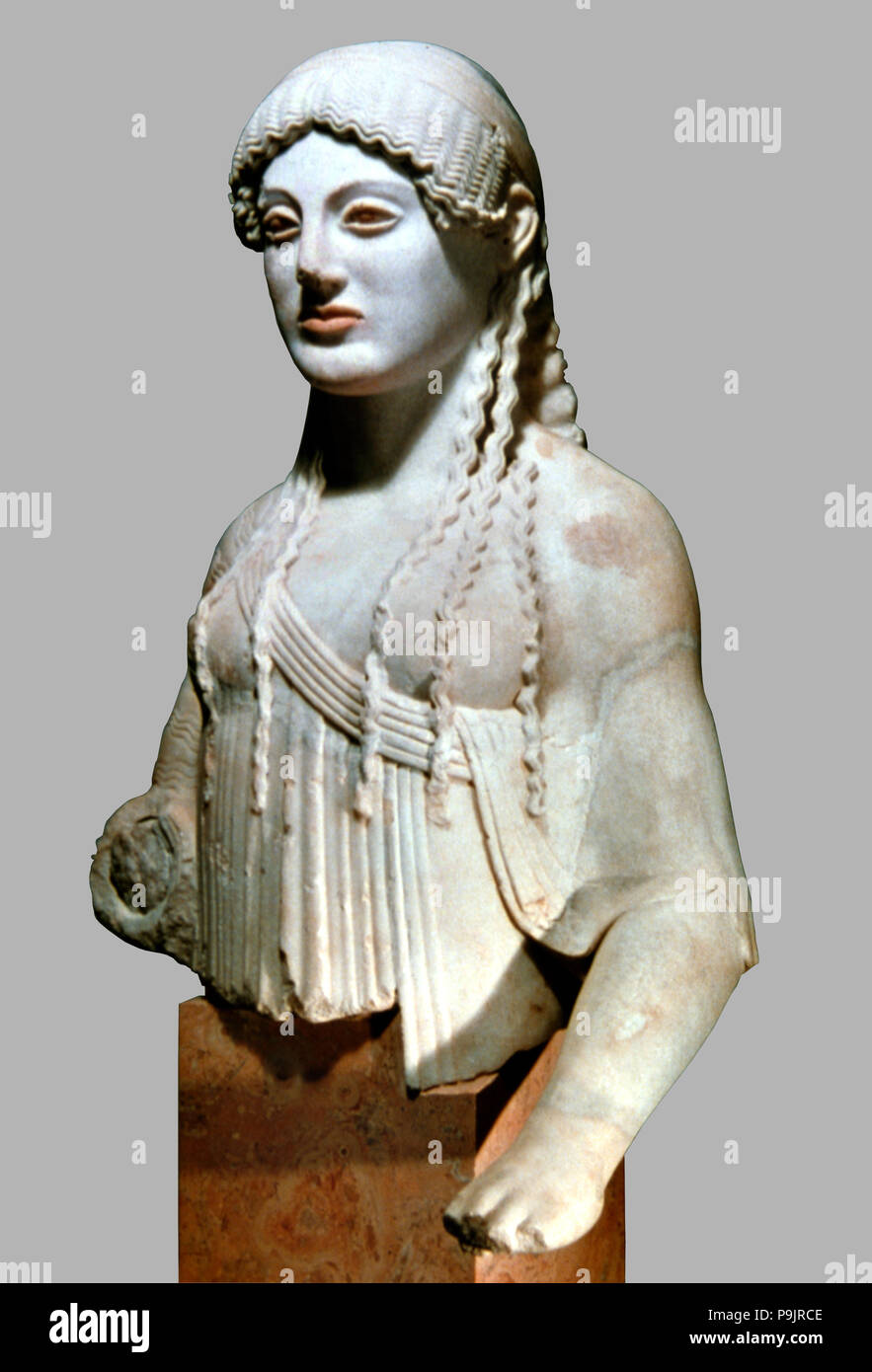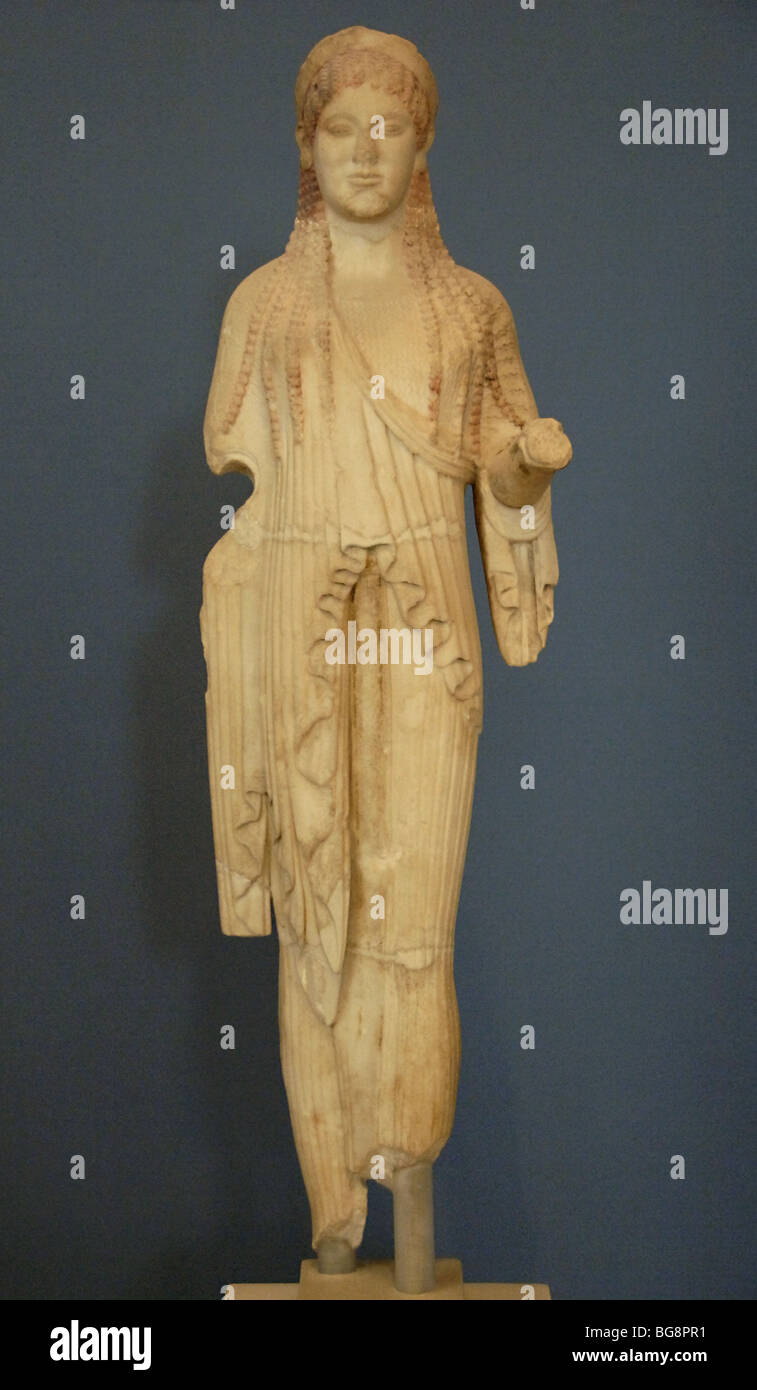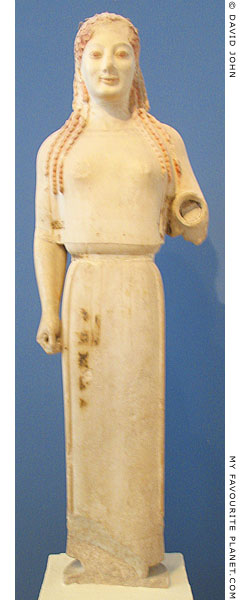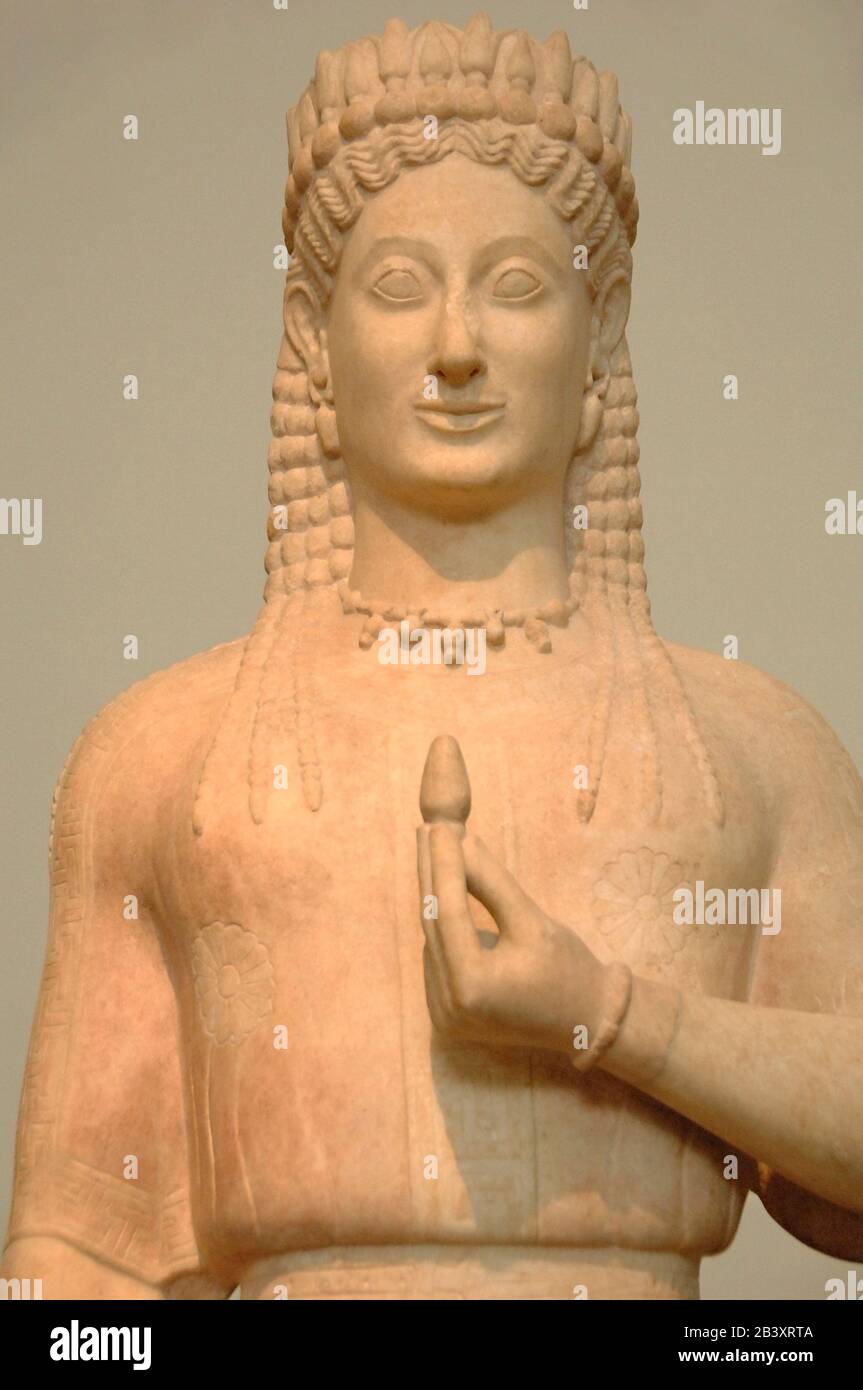Gardner s art through the ages calls the peplos kore a stylistic sister to the anavysos kouros for image of the anavysos kouros click here this statue most likely stood as a votive in goddess.
Peplos kore 530 bc parian marble from paros.
Peplos refers to the type of robe or shawl like fabric draped over the figure and kore means a girl or young female.
Covered respect to women.
From a cemetery at keratea near athens ca.
B c e physical representation of a deity specifically the goddess artemis or athena which is the most likely option as she is clothed differently than all other korai found at the acropolis.
Kore from keratea berlin kore kore from keratea detail of head front kore from keratea detail of head side kore from keratea back view.
Traces of paint survived on the surfaces of the statue when she was found.
Damaged nose upper lip drapery.
Ultimately the peplos kore is a brilliant example of the timeless enchantment of greek art.
They can still be seen as dark areas of oxidisation on the original in the akropolis museum.
Kore often used to mark graves were offerings to the gods 6th 5th c.
It is not agreed who was the inventor of painting in wax and doing pictures in encaustic.
The exceptional preservation of the statue and the intact nature of the polychromy elements makes the phrasikleia kore one of the most important works of.
570 560 bc wears a peplos the traditional athenian dress and mantle holds a pomegranate in her right hand found wrapped in a lead sheet deliberately buried to protect the statue.
Parian marble is a fine grained semi translucent pure white and entirely flawless marble quarried during the classical era on the greek island of paros in the aegean sea.
This white marble statue stands 1 17 cm high was made around 530 bc and was originally colorfully painted.
This kore is called the peplos kore because over her chiton she is wearing a peplos a sleeveless single piece garment usually of wool fixed at the shoulders with pins and belted.
The peplos kore is 1 18 metres tall and is made of parian marble quarried not far from athens.
An example is the peplos kore.
It was found carefully buried in the ancient city of myrrhinous modern merenta in attica and excavated in 1972.
Missing left lower arm parts of the right hand dress.
Peplos kore found 5 6 february 1886 in 4 pieces put later together west of the erechtheion parian marble.
It was highly prized by ancient greeks for making sculptures some of the greatest masterpieces of ancient greek sculpture were carved from parian marble including the medici venus and the winged victory of samothrace.
Originally painted archaic smile.
The peplos kore was dedicated to the goddess athena on the acropolis at athens in circa 530 b c.
It is made from marble and is slightly under life size.
The phrasikleia kore is an archaic greek funerary statue by the artist aristion of paros created between 550 and 530 bce.
Unlike men women were always clothed in archaic statuary.
_(12853680765).jpg)


























